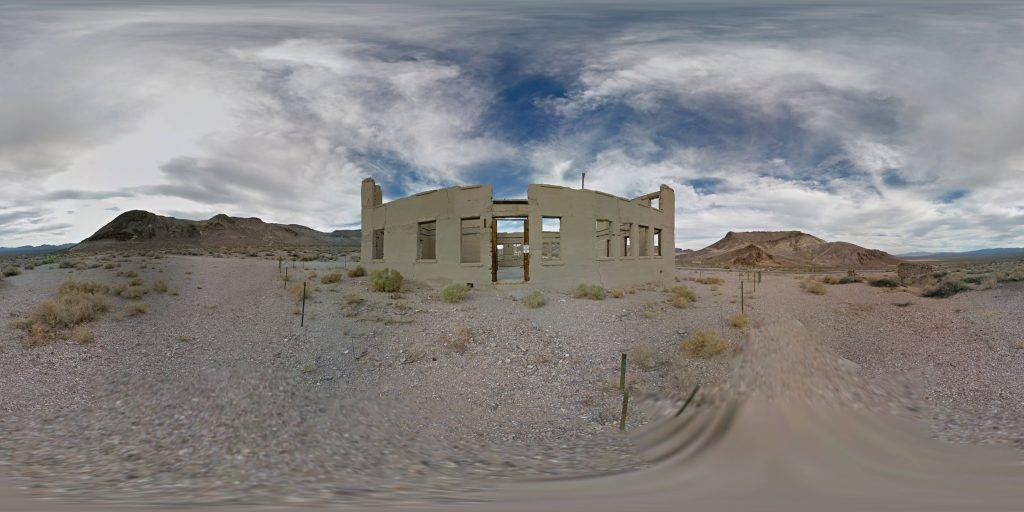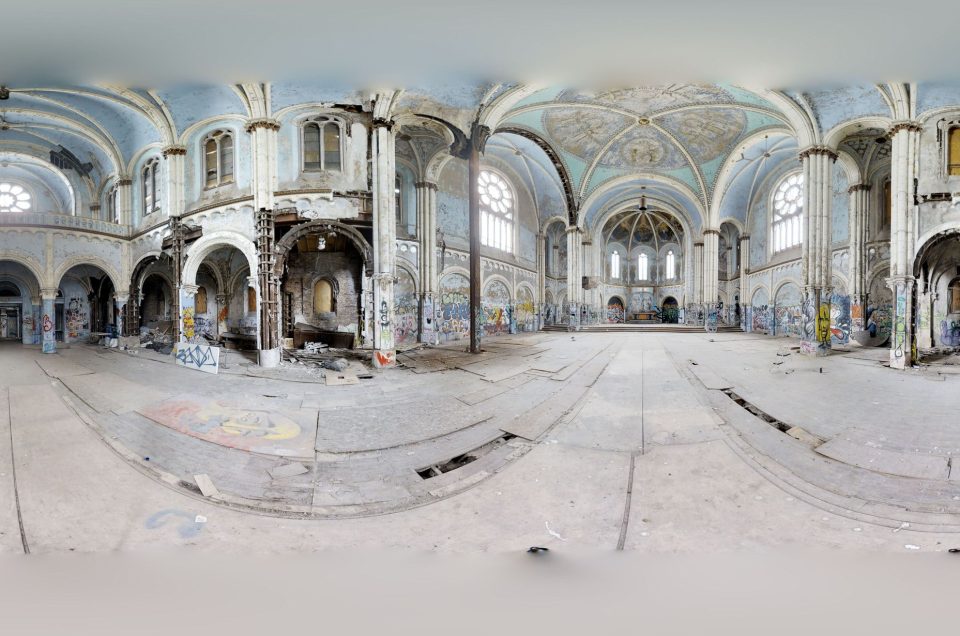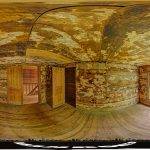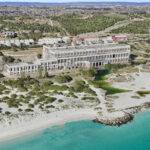Rhyolite School House
Taking a comprehensive, 360-degree view around the ruins of the Rhyolite School House, one finds themselves immersed in a historical echo located in the vastness of the Amargosa Desert, Nevada. This abandoned structure, now a mere skeleton of its former glory, invites a contemplative journey through time. The walls, though crumbling, still whisper tales of days long past, and the desert winds carry echoes of laughter and learning that once filled its halls. Surrounded by the expansive desert landscape, this site stands as a poignant reminder of the transient nature of human endeavors, silently testifying to the relentless march of time and the enduring beauty of forgotten places.
The History and Significance of Rhyolite School House in Rhyolite, Nevada
The Rhyolite School House, nestled in the now ghost town of Rhyolite, Nevada, stands as a relic of a fleeting era of prosperity driven by a gold rush. This blog post delves into the history, architectural features, and the eventual abandonment of this iconic structure, providing a glimpse into the life and times of Rhyolite in the early 20th century.
Origins in a Gold Rush Town
The discovery of millions of dollars worth of gold in the nearby mountains led to the establishment of Rhyolite, Nevada. This boomtown quickly swelled with miners and their families, necessitating educational facilities for the burgeoning population. The original school, built hastily and of poor construction, was blown down in 1906, highlighting the urgent need for a more durable structure.
The Construction of Rhyolite School House
In response to the growing educational needs, Rhyolite’s residents approved a $20,000 bond in 1907 for a new schoolhouse, leading to the construction of the second Rhyolite School House at the intersection of Cochran Street and Colorado Avenue. This new building, opened in January 1909, was a concrete structure with a first floor divided into three classrooms and a large hallway, and a second floor comprising another classroom and an auditorium. It boasted features like galvanized Spanish tile, a copula, a bell, and was touted to be fireproof while capable of being evacuated in two minutes if necessary.
A Brief Period of Use
Despite its robust construction and modern facilities, the Rhyolite School House was only briefly used. The school, which at its peak had enrolled around 250 children, had to close its doors in 1911 due to the town’s declining fortunes. This decline was precipitated by the exhaustion of the richest ore deposits, the 1906 San Francisco earthquake, and the financial panic of 1907, which strained the town’s economic resources and led to a mass exodus of its population.
Architectural Features
The architectural design of Rhyolite School House reflected the ambition and optimism of the town’s residents. It was a testament to the town’s short-lived prosperity and the efforts to establish a sophisticated community in the harsh desert environment. The use of concrete blocks and poured concrete walls, along with safety features, showed an understanding of the need for durable and safe public buildings in the growing town.
The Fall of Rhyolite and the Abandonment of the School House
The demise of Rhyolite was rapid. The Montgomery Shoshone Mine, the area’s primary economic driver, saw a steep decline in production. By 1910, the town’s population had dwindled significantly, and in 1911, the mine and mill were closed. The final blow came in 1916 when the light and power were turned off in the town, marking the end of Rhyolite as a thriving community. This economic downturn led to the abandonment of the Rhyolite School House, turning it into a ghostly reminder of the town’s once-bright future.
Rhyolite Today
Today, Rhyolite’s historical significance is recognized, and efforts have been made to preserve its remains. It has been included on the National Register of Historic Places. The nearby Rhyolite Ghost Town and Goldwell Open Air Museum offer interpretive centers for visitors to learn about the town’s history and the artists inspired by its eerie beauty.
Conclusion
The Rhyolite School House, with its rich history and architectural significance, stands as a poignant symbol of the boom-and-bust cycle that characterized many mining towns in the American West. Its brief period of use, followed by its abandonment, mirrors the fate of Rhyolite itself – a town that rose rapidly on the wings of the gold rush only to fall just as quickly when the gold veins ran dry.
If you liked this blog post, then you might find the following just as interesting. The Rhyolite Train Depot just a few blocks away, the Rochelle School House in Florida or the Ruins of Paricatuba in Brazil. You can also check out other abandoned locations in Nevada with our top abandoned places in Nevada page.

A equirectangular panoramic view of the abandoned Rhyolite School House in the Rhyolite Ghost Town in Nevada. Image by Google Maps Street View 9-2015
Do you have 360-degree panoramic images captured in an abandoned location? Send your images to Abandonedin360@gmail.com. If you choose to go out and do some urban exploring in your town, here are some safety tips before you head out on your Urbex adventure.
Unlock the secrets of exploration by diving into precise GPS data available exclusively for an array of hidden gems and hundreds of other captivating sites, all within our members’ section. By investing in a Gold Membership, you’re not just gaining access; you’re securing a key to a vast, global archive of abandoned, untouched, and mysterious locations waiting to be discovered. Embark on your adventure with confidence, knowing every corner of the world can be within your reach. Don’t just observe—explore, discover, and claim the extraordinary journey that lies ahead with our treasure trove of world secrets. Subscribe now and transform the way you see the world! If you want to start shooting 360-degree panoramic images, you might want to look onto one-click 360-degree action cameras.
Click on a state below and explore the top abandoned places for urban exploring in that state.






